Autopsy in Delphi murders trial shocks jury as girls’ cause of death is revealed for the first time
Images of the gruesome wounds suffered by Liberty German and Abigail Williams were shown in court during the murder trial in Delphi on Wednesday.
As Richard Allen’s high-profile trial for the murders of the teenage friends entered its fifth day, jurors were visibly shocked when forensic pathologist Dr. Roland Kohr gave testimony about the autopsies he performed on both girls and testified that both had bled to death.
It is the first time details about the girls’ injuries and cause of death have been made public.
Photos of both girls’ gaping neck wounds were shown on a large screen placed directly in front of the jurors. One man put his head in his hands, took a deep breath and turned red. Behind him, a woman put her hand over her mouth.
Libby, 14, and Abby, 13, were murdered outside their hometown of Delphi, Indiana, in February 2017
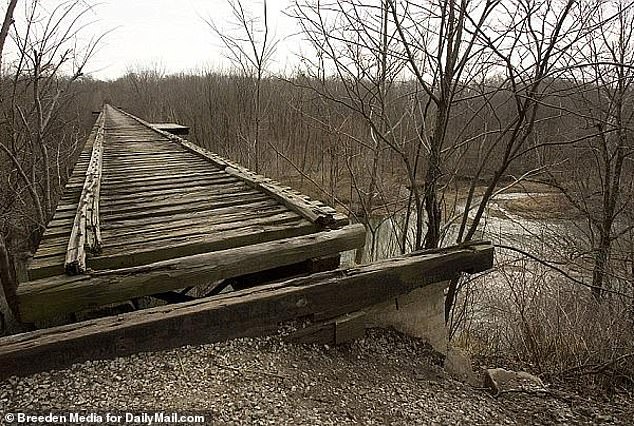
The abandoned Monon High Bridge outside Delphi, Indiana, where Abby and Libby were murdered
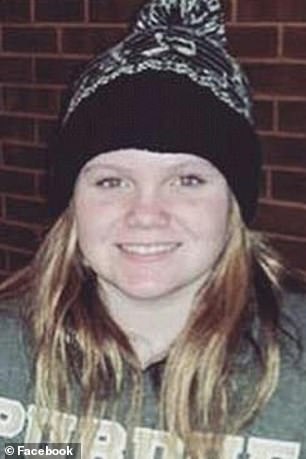
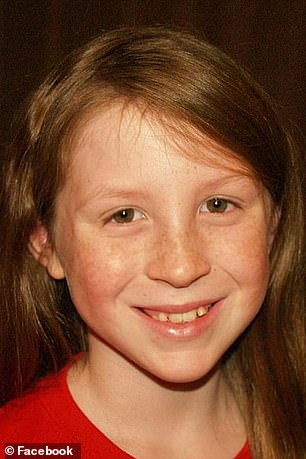
Photos showed both girls lying on their backs on the mortuary table with their neck wounds flaring. Both were 6 feet tall, Abby weighed 95 pounds and Libby 200 pounds
James Luttrull Jr. told the court there would be no footage of the girls’ internal investigation and that a female voice could be heard saying “Oh thank God” from where Allen’s wife, Kathy, sat with supporters.
Abby suffered only one cut, between 2 and 2 inches long and less than an inch deep. It ran from right to left and was deep enough to partially sever her jugular vein, meaning her death would not have been quick. The doctor estimated it would have taken the 13-year-old five to 10 minutes to bleed out.
He told the court she would have ‘felt pain’ before going into ‘fight or flight mode’ and panic ensuing.
He said: ‘Her heart rate and blood pressure would increase, and her breathing would become faster.’
The bleeding would, he said, be “passive” as no arteries were injured. He said, ‘It will take some time before you lose enough blood…[for] the beginning of a shock.’ From there, he told the silent courtroom, organs would begin to fail and consciousness would be lost. “She didn’t die right away,” he said.
Libby’s wounds were more serious and also made for a disturbing sight. At first glance, it appeared that the 14-year-old had three deep cuts on her throat, left, center and right.
Kohr testified that she suffered four or five deep cuts, as at least one of the wounds showed signs of overlapping cuts.
The nicks partially severed Libby’s left carotid artery and completely severed both her right carotid artery and her jugular vein. She would have bled more quickly than her friend, but her death was not instantaneous either since, the pathologist testified, the swelling in her brain was evidence of a more prolonged death.
Allen, 52, has been charged on two counts involving each girl; murder and felony murder, which means killing while in the act of committing another crime, in this case kidnapping.
He has pleaded not guilty to all four charges and faces a maximum prison sentence of 130 years if convicted.
Photos showed both girls lying on their backs on the mortuary table with their neck wounds flaring. Both were 6 feet tall, Abby weighed 95 pounds and Libby 200 pounds.
Neither, the court heard, showed any physical signs of sexual trauma – although it was pointed out that this did not mean no sexual activity took place – nor did they show any defensive wounds. But Libby’s hands were covered in blood, indicating that, the doctor said, she had been desperately trying to stop the bleeding in her neck.
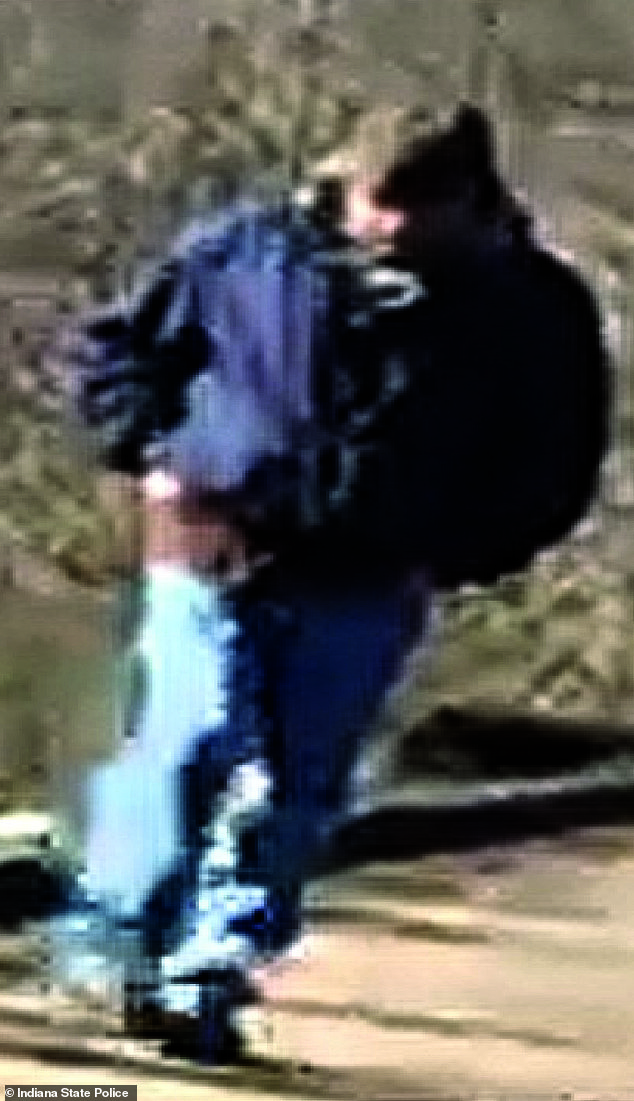
Eyewitness Sarah Carbaugh told the court she saw a “bloody and muddy” man matching Bridge Guy’s description walking away from the Monon High Bridge trail around 4 p.m. on the day the girls went missing.
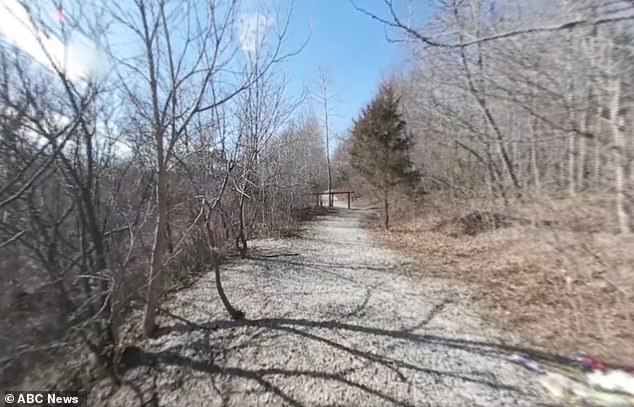
The path in Delphi, Indiana, where Abby Williams, 13, and Libby German, 14, were killed
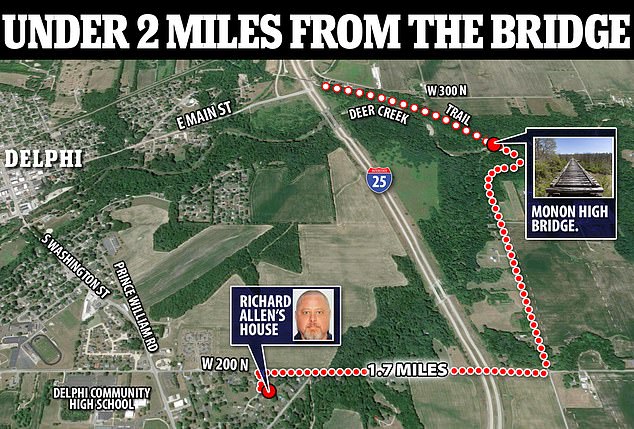
A faint red line across Abby’s chin and under her mouth suggested, he said, that duct tape or some sort of material restraint had been placed over that part of her face at the time of her death.
Asked whether the girls’ condition of livor mortis — the skin discoloration that occurs when blood settles postmortem — was consistent with them having died 40 to 41 hours before the autopsy, Kohr said “Yes.” But under cross-examination, he admitted that determining the time of death was challenging and speculative at best.
Earlier, jurors heard from a final eyewitness, Sarah Carbaugh, who told the court she saw a “bloody and muddy” man, matching Bridge Guy’s description, walking away from the Monon High Bridge trailhead on the road around 4 p.m. day the girls went missing.
She said she looked at him as she drove by in the opposite direction, but he did not make eye contact with her.
When challenged about the consistency of her recollection — transcripts of her three interviews with law enforcement officers show that she didn’t mention “blood” until a 2019 interview — Carbaugh insisted she had always mentioned both mud and blood.
She argued that she may have mumbled during her first interview and pointed out that more than an hour of video footage from her second interview has been lost.
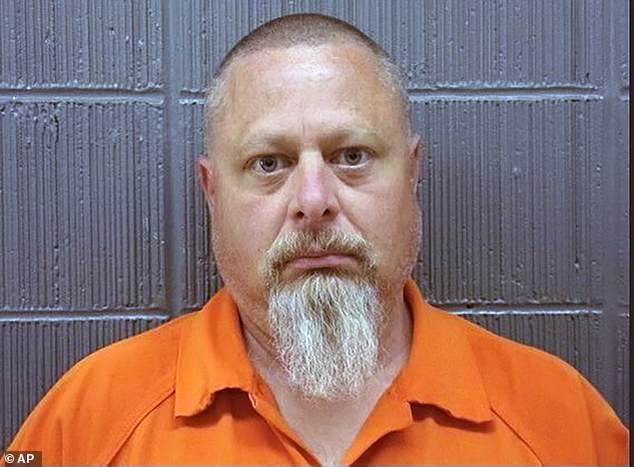
Richard Allen denies the murders of Liberty and Abby, who were killed while hiking in their hometown of Delphi, Indiana
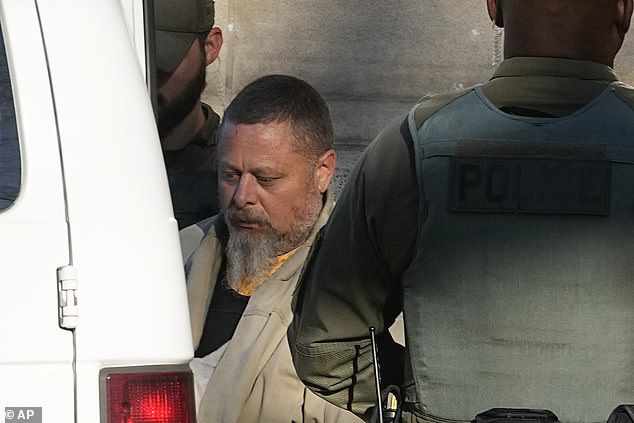
The prosecution had difficulty getting the witnesses to clearly identify that Allen was on the trail of the suspicious man
In an increasingly moody exchange with attorney Andrew Baldwin, Carbaugh snapped, “I saw Bridge Man walking down the road. He was covered in mud and blood and that was that.’
Forensic digital examiner First Lt. Christopher Cecil took the stand to tell the jury what information could be gleaned from Libby’s cell phone, which was recovered at the scene under Abby’s body.
He told the court that after she took the video of Bridge Guy at 2.13pm, there was a failed attempt to open the phone using biometrics (a fingerprint) at 2.14pm.
At 2:18 p.m., information from the Apple Health App showed that the phone had stopped moving, but started moving again at 2:25 p.m. He then stopped moving for the last time at 2:32 p.m.
During that time it covered 50.64 meters and had a height difference – which could be either up or down – of a total of two stories or 6 meters.
More than two hours after the phone’s last known movement, a panicked message came from Libby’s grandmother, Becky Patty, saying, “You need to call me now!!!!”
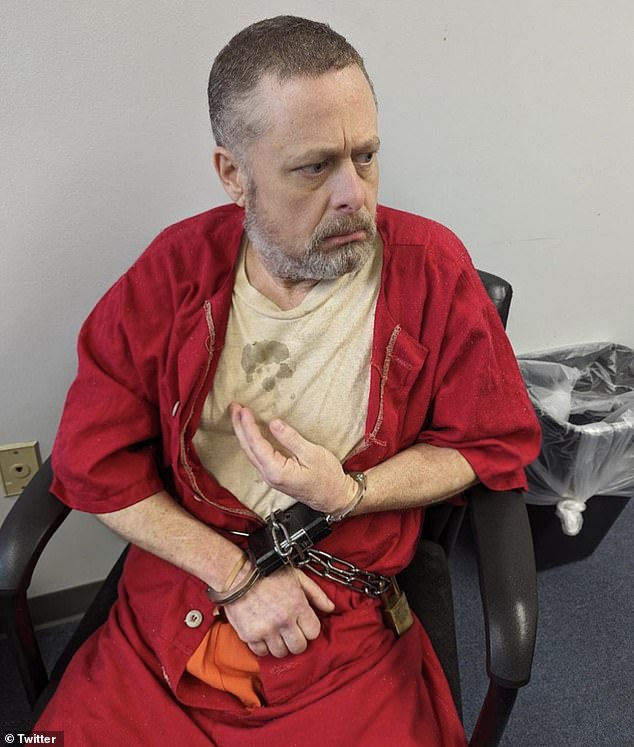
Richard Allen is slight, thin, with close-cropped hair and is barely five feet tall, but witness Breann Wilber described “Bridge Guy” as tall and muscular
No activity was recorded from then until 4:33 a.m. the next morning, when 15 messages and countless FaceTime call attempts and iMessages filled the cell phone.
The prosecution could not explain this twelve-hour ‘blackout’, but Cecil said the phone was not switched off during that time.
But while the state had no statement, the defense forwarded one. Their theory is that Libby and Abby were moved into a vehicle and taken out of range of the nearest cell tower, only returning there in the early hours of the morning to be murdered and dumped, after which the cell phone reconnected to the network . .
Cecil admitted that he didn’t know if the Health App would register movement if the phone was in a car.
On November 8, 2022, a total of 23 electronic devices, including mobile phones, were collected from Allen following his arrest and all were subject to investigation by Cecil.
Under cross-examination by Jennifer Auger, Cecil admitted that they had found nothing on the devices that linked Allen to the girls or their murder.
But led by prosecutor Nick McLeland, it emerged that the phone Allen used in 2017 at the time of the murders was not found in his home and was never analyzed.
